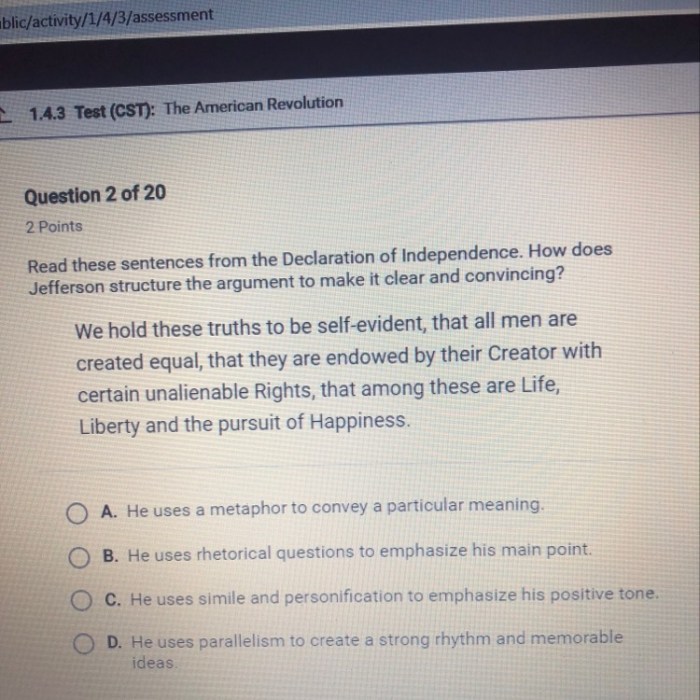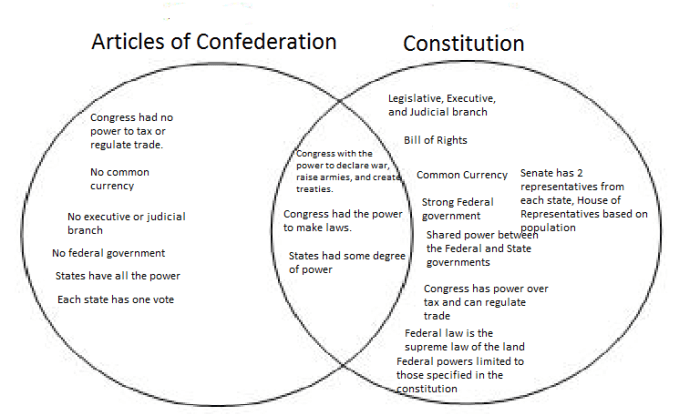Parallelism in the Declaration of Independence, a literary device employed throughout the document, serves as a powerful tool for enhancing the text’s persuasive power and memorability. This essay explores the various types of parallelism used, their impact on the text’s coherence and effectiveness, and the historical context that influenced its use.
Definition and Explanation of Parallelism

Parallelism is a literary device that involves the use of similar grammatical structures to create a sense of balance and rhythm in writing. In the Declaration of Independence, parallelism is employed extensively to emphasize the importance of the document’s principles and to make them more memorable.
Parallel structures can take various forms, such as repeating words, phrases, or clauses with similar grammatical construction. By doing so, the writer can draw attention to the similarities or contrasts between different ideas, creating a powerful and persuasive effect.
Types of Parallelism in the Declaration of Independence
The Declaration of Independence employs different types of parallelism, including:
- Grammatical parallelism:Using the same grammatical structure for parallel elements, such as nouns, verbs, or phrases.
- Syntactic parallelism:Arranging parallel elements in the same syntactic position within a sentence.
- Semantic parallelism:Using parallel elements that express similar or related meanings.
Each type of parallelism contributes to the overall coherence and impact of the text by creating a sense of unity and emphasis.
Examples of Parallelism in the Declaration of Independence
One of the most famous examples of parallelism in the Declaration of Independence is the preamble, which begins with the following passage:
“We hold these truths to be self-evident, that all men are created equal, that they are endowed by their Creator with certain unalienable Rights, that among these are Life, Liberty and the pursuit of Happiness.”
This passage uses grammatical parallelism by repeating the phrase “that” to introduce a series of parallel clauses. The use of parallelism here emphasizes the importance of each of the rights mentioned and creates a sense of rhythm and balance.
Significance of Parallelism in the Declaration of Independence
Parallelism plays a significant role in enhancing the Declaration of Independence’s persuasive power and memorability. By using parallel structures, the authors of the document were able to:
- Emphasize key principles:Parallelism draws attention to the most important ideas in the document, making them more memorable and impactful.
- Create a sense of unity:Parallel structures help to unify the document by creating a sense of cohesion and coherence.
- Enhance readability:Parallelism makes the text easier to read and understand, which is essential for a document intended to be widely distributed and read by people from all walks of life.
FAQ Overview: Parallelism In The Declaration Of Independence
What is parallelism?
Parallelism is a literary device that involves the use of similar grammatical structures to create a sense of balance and emphasis.
What types of parallelism are used in the Declaration of Independence?
The Declaration of Independence employs various types of parallelism, including grammatical, syntactic, and semantic parallelism.
How does parallelism contribute to the effectiveness of the Declaration of Independence?
Parallelism enhances the document’s persuasive power by creating a sense of rhythm, balance, and emphasis, making it more memorable and impactful.


